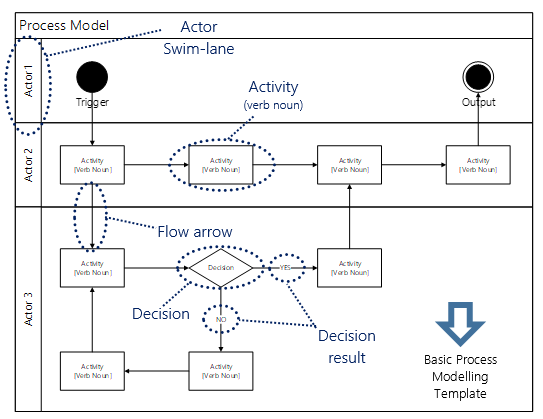Process Modelling [Level 2]
- This level may be the most familiar to you.
- Process Modelling is used to understand the flow of tasks in both current and future processes.
- Process modelling will not provide an immediate solution to a particular process problem BUT it may help to identify the potential root cause(s).
- Process modelling is also used to illustrate potential “could-be” and “to-be” scenarios in order to test any assumptions and to confirm hypotheses before implementing a change.
This is the most accessible modelling technique and may be used by all colleagues.

The simplest way to model processes is to use


- In the example we have used swim-lanes to identify the actors.
- It is good practice to document task activity using verbs and nouns to avoid having excessive text in each shape.
- We can see that the flow of the process (shown by the arrows) is left to right.
- Where we have a decision the general rule is that a “positive” (Yes) outcome flows horizontally (usually to the right) and “negative” (no) outcome flows vertically (usually downwards).
Hints & Tips
- Practice your modelling technique on any process you are familiar with.
- Actors are defined as the people (usually the role rather than an individual) or team who conduct the activity.
- Label arrows from a decision to indicate the positive and negative outcomes.
- Further information on the Basic Process Modelling shapes can be found in the Process Standards section of this guide.
Hints & Tips
- Depending upon the degree of process complexity or scope of our process analysis we may need to create several layers of models in order to accurately represent process activity.
- Each layer should add more detail.
- Care should be taken to remain consistent across each level if this approach is required.
